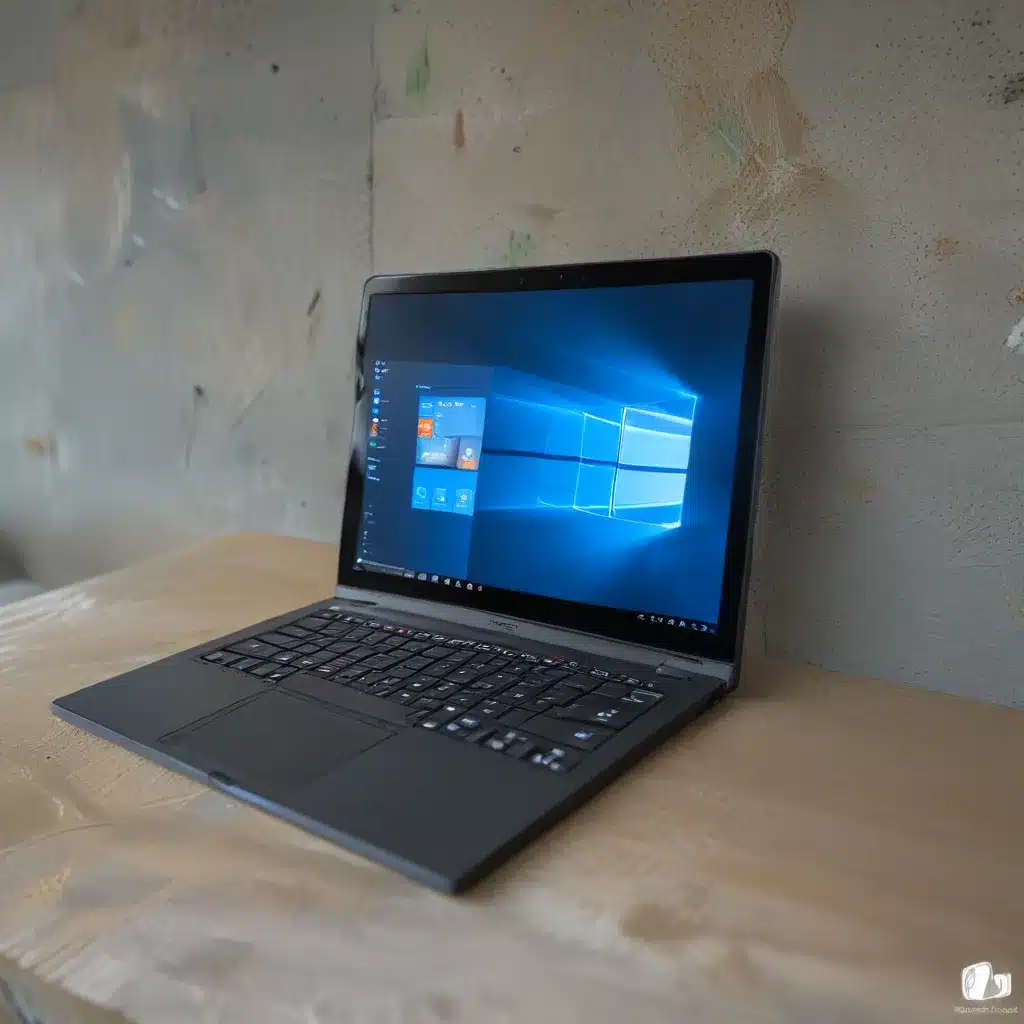
Upgrading to Windows 11: A New Era for Your PC
Ah, the age-old conundrum – should I upgrade my trusty Windows 10 to the shiny new Windows 11? It’s a decision that can feel as daunting as trying to untangle a bowl of spaghetti. But fear not, my fellow tech-savvy friends, for I’m here to guide you through the process with the same enthusiasm I muster when tackling a stubborn printer jam.
You see, I’ve been there, done that, and I’m ready to share my experiences – the good, the bad, and the downright hilarious – to ensure your Windows 11 upgrade journey is as smooth as a freshly waxed car. So, grab a cup of your favorite caffeinated beverage, sit back, and let’s dive into the world of Windows 11 together.
Assessing Your System’s Compatibility
Before we even think about hitting that upgrade button, we need to make sure your computer is up to the task. Just like finding the perfect pair of shoes, you don’t want to end up with something that’s a tight squeeze or, even worse, a complete mismatch.
Microsoft’s official guidelines state that your device should meet the minimum system requirements for Windows 11, including a relatively modern processor, at least 4GB of RAM, and a Trusted Platform Module (TPM) version 2.0. If you’re running an older machine, you might need to do a bit of tinkering under the hood to make it work.
Now, I know what you’re thinking – “But I’ve been using Windows 10 without any issues for years! Why do I need to jump through all these hoops?” Well, my friend, Windows 11 is a bit of a diva when it comes to system requirements. It’s like trying to fit a square peg into a round hole – it might work, but it’s not going to be a seamless experience.
To help you assess your system’s compatibility, I recommend using the PC Health Check app from Microsoft. This nifty little tool will scan your device and let you know if it’s ready to take the Windows 11 plunge. Trust me, it’s better to know what you’re getting into before you start the upgrade process.
Preparing for the Upgrade
Alright, so your system is compatible, and you’re ready to take the leap. But hold on, we’ve got a few more steps to tackle before we can officially say goodbye to Windows 10.
First and foremost, it’s always a good idea to back up your data. I know, I know, it’s a pain, but trust me, you’ll be thanking yourself later. Whether it’s your precious family photos, your meticulously organized work files, or your extensive collection of cat GIFs, make sure everything is safely stored before you start the upgrade.
Next, take a moment to tidy up your digital house. Delete any files or programs you no longer need, and make sure your antivirus software is up-to-date. This will not only make the upgrade process smoother, but it’ll also give your computer a fresh start.
And let’s not forget about those pesky drivers! Make sure all your hardware, from your trusty mouse to your state-of-the-art graphics card, is running the latest and greatest versions. ITFix can help you with that if you’re not sure where to start.
The Upgrade Process: A Step-by-Step Guide
Alright, now that we’ve got all the prep work out of the way, it’s time to dive into the main event – the Windows 11 upgrade. Buckle up, my friends, because this is where the real fun begins.
Microsoft provides a few different options for upgrading to Windows 11, and I’m here to break them down for you:
-
Windows Update: This is the easiest and most straightforward route. Just head to your Windows 10 settings, navigate to the “Windows Update” section, and check if the upgrade is available. If it is, simply hit that “Download and Install” button, and let the magic happen.
-
Installation Assistant: If the upgrade isn’t showing up in your Windows Update yet, you can use the handy-dandy Windows 11 Installation Assistant to kickstart the process. This tool will guide you through the upgrade step-by-step, ensuring a seamless transition.
-
Boot from Media: If you’re feeling extra adventurous, you can create a bootable USB or DVD and launch the Windows 11 setup directly from there. This is a great option if your current Windows 10 installation is giving you trouble or if you want a clean slate.
No matter which route you choose, the upgrade process itself is pretty straightforward. The Windows 11 installer will walk you through everything, from preserving your files and settings to customizing the new interface. Just sit back, relax, and let the computer do its thing.
Embrace the New Era of Windows 11
Congratulations, you’ve officially made the leap to Windows 11! Take a moment to bask in the glory of your newfound operating system, and then let’s dive into all the shiny new features.
From the sleek, minimalist design to the improved multitasking capabilities, there’s a lot to love about Windows 11. And let’s not forget about the enhanced security features, which will give you the peace of mind you deserve in this digital age.
Of course, no upgrade is without its hiccups. You might encounter a few compatibility issues with older programs or drivers, but don’t worry, ITFix is here to help you navigate those tricky waters.
So, sit back, grab another cup of coffee, and start exploring all the wonders of Windows 11. Who knows, you might even find a few hidden gems that’ll make your life easier. After all, the best part of any upgrade is the thrill of the unknown.












